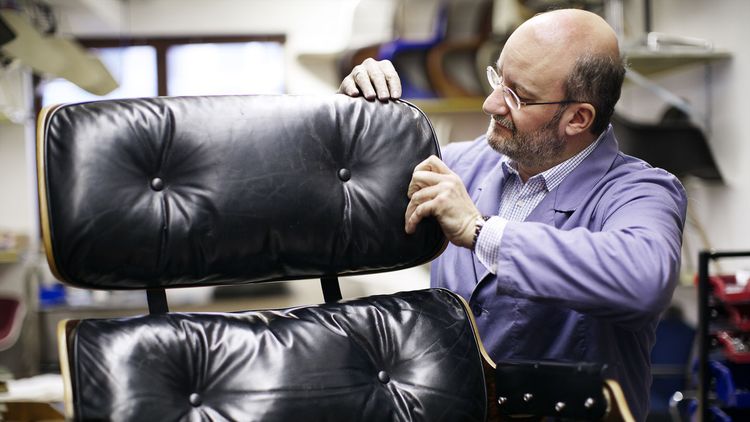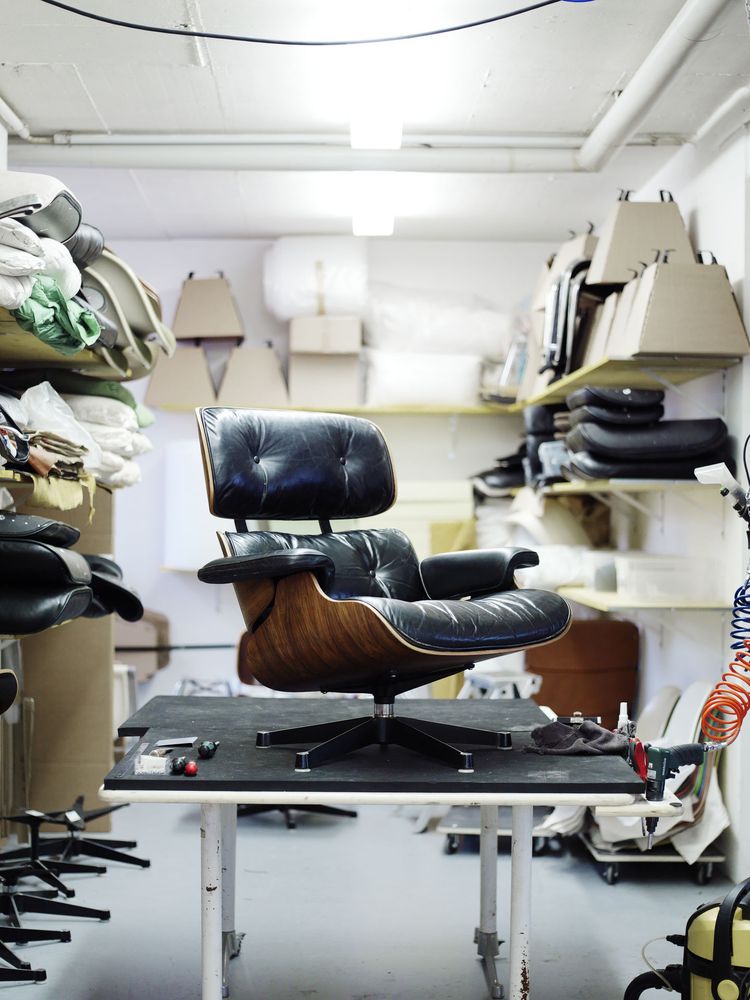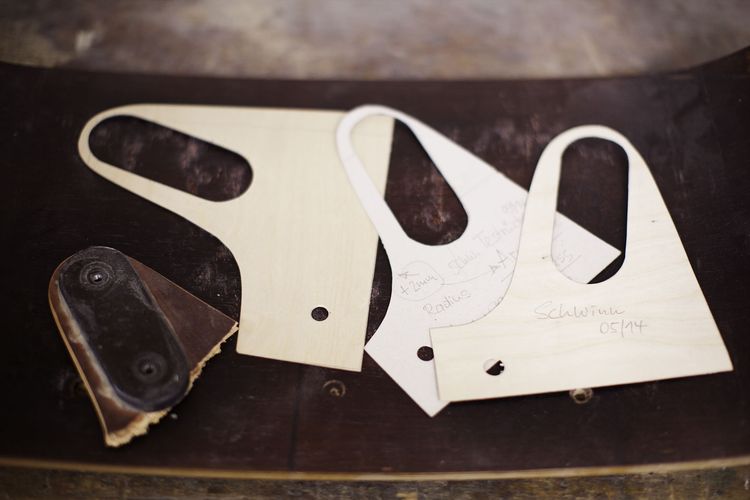ProductsChairsLounge chairsSofasOffice chairsChaises longuesStools & benchesSculpturesConference chairsAirport seatingStorage spaceMicro architectureDining tablesCafé tablesCoffee & side tablesDesksOffice furniture systemsConference systemsLightingClocksDecorative objectsCoat racks & wall shelvesTrays & vesselsNewBestsellerColour & materialAlexander Girard Antonio CitterioBarber OsgerbyCharles & Ray Eames George NelsonHella JongeriusIsamu NoguchiLounge chair finderOffice chair finderGift finderCare & repairSpare partsCare productsManufacturer warrantyVitra Circle StoresMynt: sit differentlyAntony Limited Edition 2025InspirationsLiving roomDining roomHome OfficeChildren's roomOutdoorHome StoriesAugmented RealityColours & materialsHome SelectionWorkspaceFocusMeetingWorkshopClub OfficeCitizen OfficeStudio OfficeDynamic SpacesHospitalityAirportsEducationCo-WorkingHealthcareOur ClientsDestination WorkplaceA case for classicsOffice chairsDancing OfficeHome StoriesThe Home Selection fabrics from Kvadrat and DedarAugmented Reality - bring Vitra products into your homeSchool of Design: Showcase work and knowledgeA case for classicsColour & materialAn open house An office landscape - without walls or partitionsHigh comfort of low energyA leading space for a leading art collegeServicesCare & repairCare productsManufacturer warrantyFAQ and contactInstructionsConsulting & Planning StudioVitra Circle StoresConsulting & planning in the VitraHausInstructionsOutdoor care instructionsRepair, maintenance, overhaul at the Vitra Circle Store Campus ProfessionalsCAD dataProduct factsheetsCertificatesSustainability reportInstructionsEcology informationpConPlanning examplesColour & Material LibraryCertificates and standardsHome SelectionTo the dealer loginOur ClientsMyntDestination Workplace: Visit our clients and partnersAnagram SofaMikadoTyde 2 on castorsACXDancing OfficeOffice chairsMagazineStoriesConversationsExhibitionsDesignerProject VitraA Capsule in TimeSeeing the forest for the treesRefining a classicMynt is a lifetime achievement to meA desk like a typefaceV-FoamSculptural IconsGames bring people together – just like good officesLet there be light!Social SeatingJust Do It!EVER GREENWhy the Eames La Fonda Chair was designedWhen a Sofa is more than just a Sofa: Anagram100% virgin wool – 100% recyclableAn archive is like a time capsuleVitraHaus Loft - A conversation with Sabine MarcelisA 1000 m2 piece of furnitureFrom a toy to an objectThe Eames Collection at the Vitra Design MuseumAbout the partnership between Eames and VitraVitra CampusExhibitionsGuided tours & workshopsFood and drinkShoppingActivities for familiesArchitectureYour eventConsulting & planning in the VitraHausPlan your visitVitra Campus appCampus EventsNewsVitraHausVitra Design MuseumVitra SchaudepotVitra Circle Store CampusOudolf GartenAbout VitraSustainabilityJobs & CareersDesign processThe Original is by VitraHistory - Project Vitra
The Chair Whisperer
A Visit to the Workshop of Stefan Thoma

Stefan Thoma has a passion for restoring furniture classics by Charles and Ray Eames. He took apart a Lounge Chair for us and explained what makes this original design so unique.
In the early ’90s, Stefan Thoma found his first Eames chair – in a pile of rubbish. ‘That sounds like a cliché, but it’s how it all started. I repaired that old fibreglass side chair in my father’s workshop.’ Thoma’s admiration for the work of the American designer couple Charles and Ray Eames was immediate, and his interest quickly grew. The autodidact studied old sales brochures, scholarly literature and catalogues, exchanged information with other Eames fans, and began to repair pieces that had been manufactured by Herman Miller and by Vitra in Europe since 1959. His Breisgau workshop quickly evolved into an insider’s tip for the vintage furniture scene. Today the 44-year-old is a recognised expert and appraiser for classic designs, and one of the few conservators in all of Germany to be authorised by Vitra.
In the early ’90s, Stefan Thoma found his first Eames chair – in a pile of rubbish. ‘That sounds like a cliché, but it’s how it all started. I repaired that old fibreglass side chair in my father’s workshop.’ Thoma’s admiration for the work of the American designer couple Charles and Ray Eames was immediate, and his interest quickly grew. The autodidact studied old sales brochures, scholarly literature and catalogues, exchanged information with other Eames fans, and began to repair pieces that had been manufactured by Herman Miller and by Vitra in Europe since 1959. His Breisgau workshop quickly evolved into an insider’s tip for the vintage furniture scene. Today the 44-year-old is a recognised expert and appraiser for classic designs, and one of the few conservators in all of Germany to be authorised by Vitra.


Located in the idyllic town of Breisach, about one hour’s drive north of Basel, the workshop of the family-owned business is filled with seat shells, chair bases, cushions, spare parts and reassembled furnishings. A racing bicycle is casually propped against a wall, but the busy tinkerer found little time to use it during the past summer. ‘Too much to do!’ While his employee Gerd Zimmermann devotedly tends to the cracked moulded wooden shell of a disassembled Lounge Chair that has just arrived, Thoma examines the new ‘patient’ piece by piece. To the layman, it looks like a hopeless case: a crack runs right across the thin wooden shell. How could that occur? And above all: How can it be repaired?

‘Sometimes we are surprised by all the things that can happen to a chair. Some owners leave their furniture standing out in the blazing sunlight, for example. We often see damage that is hard to explain. Especially since the Lounge Chair has a very sturdy construction and Vitra still continues to perfect it. If you take good care of this chair, it really is impossible for it to break!’ Thoma shakes his head. ‘The flexibility of the moulded wood shells and their rubber-and-metal connectors, the so-called shock mounts, make the chair very strong and also extremely comfortable. The wooden shells used to be made with five laminated plies; now they consist of seven. The seven-ply veneer shells are one millimetre thinner, which makes them more flexible. The flexing construction is necessary for the chair’s stability and comfort. Only 18 screws hold the chair together, which has a total of 160 individual components and is assembled in 47 separate steps.’ Thoma has all of these numbers in his head. Envisioned by the Eameses as an elegant, modern club chair, the Lounge Chair was launched on the market in 1956. ‘Back then, the Lounge Chair weighed about 25 kilogrammes and cost about 1200 dollars. That was a lot of money at the time!’


In its classic dimensions, the piece is 84 centimetres high, with a seat depth of 56.5 centimetres and a seat height of 38 centimetres. ‘But as people are now some 10 centimetres taller on average, a somewhat larger version with a height of 89 centimetres was more recently introduced.’ Which measurements does Thoma personally prefer? ‘The classic dimensions. The original size fits me better, even though I’m quite tall at 1.85 metres. Everyone should definitely try out both models to see which seat depth and backrest height suits them best’, advises the expert. Anyone that doesn’t purchase a chair directly from Vitra should make sure they are getting a genuine Eames product.
Sometimes I sit down in the evening in front of a Lounge Chair, reward myself with a glass of wine, and just enjoy looking at it.
Thoma can reliably spot a counterfeit Lounge Chair due to the incorrect proportions of the cushions – for example, armrests that are too thick – or the thickness of other materials, the type of wood used for the shells, the position of the buttons on the cushions, or the fake label underneath the seat shell. ‘At the moment, there are a lot of copies in circulation with the Herman Miller label. They are sometimes such good counterfeits that even I can only distinguish them from an original with a stitch-counter. For a layperson without this level of experience, it is difficult to differentiate an original from a plagiarised product. There are so many Eames designs on the market that you really have to look closely. But sometimes the fakes are of such inferior quality, I can’t figure out how customers don’t notice that the wrong legs are stuck on their Plastic Side Chair – until the legs suddenly break off and they land on the floor!’
How can people protect themselves from inadvertently purchasing a counterfeit? ‘Be vigilant when you see dumping prices! Only dubious dealers offer so-called originals with inexplicable discounts. You should always buy new pieces from an authorised Vitra dealer, and vintage objects from well-reputed auction houses or galleries, or at an established trade fair. Because the trading of vintage furniture is experiencing such a boom, it’s important to be cautious.’
How can people protect themselves from inadvertently purchasing a counterfeit? ‘Be vigilant when you see dumping prices! Only dubious dealers offer so-called originals with inexplicable discounts. You should always buy new pieces from an authorised Vitra dealer, and vintage objects from well-reputed auction houses or galleries, or at an established trade fair. Because the trading of vintage furniture is experiencing such a boom, it’s important to be cautious.’

In the meantime, Thoma and his assistant have taken a closer look at the cracked shell of the Lounge Chair. ‘The chair was probably exposed to excessive fluctuations in temperature, as well as too much mechanical stress. Trapped heat, generated by antiquated floor heating, eventually causes the glue between the layers of veneer to pulverise, and the shell becomes brittle and breaks. We are going to rebuild it by restoring the veneer plies and injecting an adhesive in several places.’ Thoma also fixes the loose brass fittings on the swivel base, replacing them with precisely tooled components made individually on his lathe. No matter if the problem has to do with torn off shock mounts, defective legs or scratched upholstery covers: the conservator realigns, smooths and renews wood, rubber, metal and leather – and after completing his work, he adds a seal with the job number and his name. This provides a traceable record of the work he has done.


What fascinates him so much about the Lounge Chair? ‘The chair’s lightness and comfort! Its construction and the ingenious technical interplay of different materials! The more difficult a restoration job, the more I look forward to presenting the finished result. Sometimes I sit down in the evening in front of a Lounge Chair, reward myself with a glass of wine, and just enjoy looking at it.’
Publication date: 14.11.2019, first published in ‘Schöner Wohnen’
Author: Gunda Siebke
Images: © Martin Wagenhan



